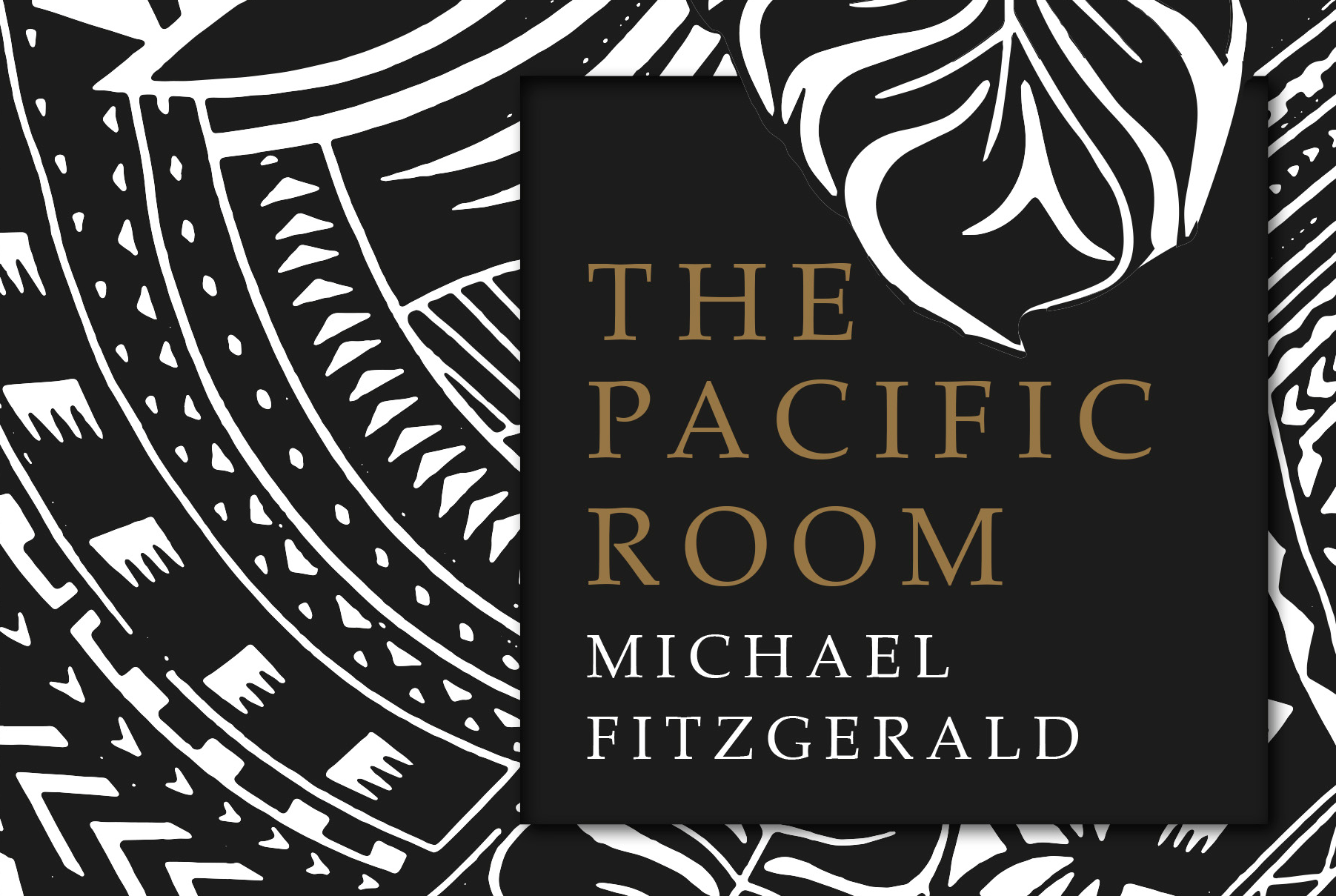
In 1892, Italian painter Girolamo Nerli travels to Samoa to paint famous author Robert Louis Stevenson, known to the locals as Tusitala, ‘the teller of tales’. His goal? To capture something of the Hyde within Stevenson’s Jekyll. Over a century later, art historian Lewis Wakefield makes the same pilgrimage, in search of the story behind this portrait, leaving behind the medication that controls his bi-polar disorder and allowing him access to his own repressed feelings. Meanwhile, dancer Teuila channels the spirit of Stevenson’s servant, her ancestor Sosimo, and explores her own duality as a fa’afafine, a Samoan identity that embodies both male and female traits.
These are the four at the core of Michael Fitzgerald‘s The Pacific Room, an examination of identity and duality that blends historical fact and contemporary fiction.
Taking Stevenson’s Jekyll and Hyde as a starting point, Fitzgerald crafts characters that straddle numerous identities, both public and private, both accepted and not. From Nerli’s indiscretions captured on camera by Stevenson’s stepson in the 1890s, and Stevenson’s own escape from European success to secluded Samoa (not to mention his involvement with Samoan rebels), to Teuila’s socially accepted gender identity, and Lewis’ battle with bi-polar disorder, Fitzgerald’s world is populated by people who are shifting constantly.
But this is not a story of secrets and subterfuge as such, and you’d be forgiven for thinking that the Jekyll and Hyde connection would make this short novel dark and foreboding. True, there are dark moments – the loss of Lewis’ family, for example, is the catalyst for his mental breakdown – but they’re countered by a combination of Fitzgerald’s beautiful, dreamlike prose, and by the fact that this is not a tale focused on the inner monster, but is a rather more subtle, and perhaps more positive, reading on the theme of duality. Teuila, though living her inner truth, is not embracing her Hyde, and Lewis, relying on medication to organise and maintain his thoughts, is no Jekyll. Human nature is much more complex, focused not on black and white, but shades of grey, and Fitzgerald captures them wonderfully as he moves from character to character and era to era.
Set against the already lush backdrop of Samoa, Fitzgerald’s liberal use of imagery can get a little dense sometimes – a rainforest all of its own! – and the overarching themes can get a little lost in the myriad characters he gives voice to, but there’s a richness to the tale that I just can’t shake. It’s almost bohemian in its way, capturing a feeling that perfectly encapsulates the idea of a novelist from Victorian Britain going off the grid in the way Stevenson did.
Michael Fitzgerald’s The Pacific Room might be a short read, but it isn’t an easy one, filled to the brim with fascinating characters and gorgeous scenery. Exploring the duality of human nature, this is a Jekyll and Hyde like tale that explores the public and private sides of a character. But where one might expect a simplistic tale of good and evil, Fitzgerald instead presents a tender and touching series of vignettes, brief glimpses that build up multi-faceted and interesting people, who occupy neither light nor dark, but some grey place in between. Coupled with a gift for gorgeous prose and rich imagery, it might prove to be one of the most colourful selection of greys you’ll ever read!
The Pacific Room is published by Transit Lounge and is available now.
———-
